

2025-05-29 08:25:28 Thu ET
stock market technology platform network scale lean startup fifth discipline value creation flywheel perseverance resilience passion reinvention disruptive innovation purpose vision mission blue ocean personal finance grit self-help self improvement focus motivation personal growth
Ben Horowitz (2014)
The Hard Thing about Hard Things
Serial venture capitalist Ben Horowitz describes, discusses, and delves into many hard truths, lessons, and insights from his own rare unique entrepreneurial journey of running LoudCloud from a Silicon Valley tech startup to an eventual impressive $1.65 billion sale to Hewlett-Packard. From the 1990s to the early-2000s, Horowitz guided LoudCloud through many life-or-death struggles before he managed to sell the first-generation cloud company to Hewlett-Packard. Horowitz shows that there is neither formula nor recipe for founders, directors, senior managers, and venture capitalists to promise entrepreneurial success. Throughout this book on hard truths in his rare unique entrepreneurial journey, Horowitz serves as a first-rate storyteller and a vitally irreverent mentor who uses proverbs, allusions, and metaphors from Jay Z and Kanye West to Clint Eastwood to Dr Seuss. Many business leaders can find worthy advice, support, and guidance from this exhortation to persist through the common entrepreneurial struggle. These business leaders learn many lessons, hard truths, and actionable insights from Horowitz’s part scratch sheet, part guide book, and part autobiography.
Horowitz felt both the essential need and internal motivation for him to write a new book on his own entrepreneurial journey when he realized that many management books for self-help almost never disclose the hard truths in entrepreneurship. The hard truth is not setting a big, hairy, and audacious goal, mission, or social purpose. The hard truth is laying off hundreds of co-workers when the company misses the near-term goal. The hard truth is not hiring great people or managing smart teams. The hard truth happens out of the blue when these great people and smart teams develop a sense of entitlement with unreasonable demands, requests, preferences, and expectations from the lean startup. The hard truth is not setting up a new, lean, flat, or hierarchical organizational chart. The hard truth is getting great people and smart teams to communicate effectively within the new organization. The hard truth is not thinking big or dreaming big. The hard truth is waking up in the middle of the night in cold sweat when the dream turns into a nightmare.
Horowitz points out the major common problem with many management books on self-help, self-improvement, self-enrichment, and innovation and entrepreneurship: their authors often attempt to provide a formulaic recipe for lean startup challenges; however, there are no recipes for such business challenges. There is no recipe for complex and dynamic business situations, scenarios, and transitions. There is no recipe for building a high-tech company with lean cost structure. There is no recipe for leading great people and smart teams out of setbacks, failures, difficulties, and disappointments. There is no recipe for making a series of hits, products, services, and disruptive innovations in higher technology. There is no recipe for playing NFL quarterback, NBA center, or MLB slugger. There is no recipe for running for office. There is no recipe for leading smart teams out of trouble when the business is near bankruptcy. After all, there is no formula for dealing with all of these hard truths. In this negative light, Horowitz highlights the vital importance and practical relevance of leading smart teams to navigate through numerous setbacks, failures, difficulties, and disappointments amid substantial market uncertainty. Nevertheless, Horowitz provides many bits and pieces of prescient advice, support, and guidance to help new business leaders better cope with these hard truths. When business leaders confront these brutal facts and hard truths, these co-founders, directors, and senior managers often find no easy answers in life, innovation, and entrepreneurship.
In each wave of massive layoffs, senior managers should lay off their own people directly with proper eye contact, further career support, compassion, and empathy. In practice, these senior managers cannot and should not pass this difficult task to HR advisors, external recruiters, or headhunters. Each smart team member would naturally ponder this way: If the CEO hired me and I busted my ass working for the CEO and the company, I expect the CEO to have the courage to lay me off directly. Specifically, senior managers should emphasize the basic but brutal fact that these layoffs are the company’s epic failures. At the same time, these senior managers should make their best efforts to emphasize that these layoffs are not the personal failures of individual contributors, teams, or other corporate staff members. One of the most essential tasks for founders, CEOs, and senior managers involves getting great people to work for the company in support of the bigger, bolder, brighter, and broader corporate vision, mission, or social purpose. Even with all the good advice, support, guidance, and hindsight in the world, hard truths continue to be hard truths in reality.
Senior managers should build a rare unique corporate culture that rewards but not punishes smart teams for getting common operational problems under the sunlight. In this positive fashion, smart teams can take proactive actions to solve these core operational problems in time. For founders, CEOs, directors, and senior managers, Horowitz argues that the vital growth mindset empowers business leaders to focus on what their smart teams should strategically get right in due course. At the same time, Horowitz argues that these business leaders should stop worrying about what might go wrong under Murphy’s law. All the successful founders, CEOs, directors, and senior managers often tend to look for hard answers, inconvenient truths, and creative solutions to organizational issues, problems, difficulties, and several other corporate setbacks, failures, obstacles, and disappointments. At any point in time, these business leaders are not afraid to ruffle the feathers. In several cases, these business leaders should twist arms in order to sustain core operations in response to potential competitive pressures in the product market.
Horowitz draws a distinction between peacetime CEOs and wartime CEOs. Peace-time CEOs focus on the big picture. However, the devil is often in the details. War-time CEOs care about a speck of dust on a gnat’s ass if it interferes with the core business operations. As both the peacetime CEO and wartime CEO for LoudCloud at different stages of the common entrepreneurial struggle, Horowitz draws on his personal experiences of confronting the basic but brutal facts in regard to rescuing the company near bankruptcy within 90 days. Another worst-case scenario relates to the 30-day case for Nasdaq to delist LoudCloud as a penny stock from the stock exchange. Through his entrepreneurial journey, Horowitz challenges new founders, directors, and senior managers to make each company great with significant social impact worldwide. If these business leaders cannot aim high enough to make each company great with social impact, they should never have started the company in the first place.
Many co-founders, entrepreneurs, and venture capitalists may start their company with high hopes, but like Ben Horowitz and Marc Andreessen at LoudCloud, these business leaders are likely to experience the common entrepreneurial struggle. In Horowitz’s entrepreneurial experience at LoudCloud, he did not struggle alone. He enlisted the best business minds, cloud software engineers, smart and tech-savvy marketers, and analysts in order to address the operational problems at LoudCloud. In response to relentless and substantial market uncertainty around the brutal facts and hard truths in entrepreneurship, Horowitz provides the first and foremost piece of advice for new business leaders: we should always put our people first, then the products, and then the profits in this particular order. Through the entrepreneurial journey, good, smart, and technically capable people with the right kind of ambition care deeply about the team’s success and dynamism, the broader product-market fit, and the company’s long-term bottom-line profitability. Senior managers should not only convey both optimism and control, but these senior managers should also be honest and transparent about the potential competitive threats to the company. In the worst-case scenario, senior managers should deliver bad news of layoffs to their people directly with further career support, compassion, and empathy. Senior managers should never outsource this task to HR advisors, external recruiters, or headhunters. Specifically, senior managers should emphasize the basic but brutal fact that these layoffs are the company’s own epic failures. At the same time, these senior managers should emphasize that these layoffs are not the personal failures of individual contributors, teams, or other corporate staff members.
In addition, senior managers should make their best conscious efforts to minimize office politics about pay, promotion, recruitment, and corporate territory with sound, fair, and efficient, and meritorious internal processes, operations, and mechanisms. In the long run, a positive lean-startup culture that emphasizes iterative continuous improvements drives team actions, creative solutions, and behaviors. All of these positive results help move new companies toward their respective business goals, missions, visions, and social purposes. Further, senior managers should build their knowledge, rapport, and friendship from week to week through many big and small interactions with early tech adopters, users, customers, employees, and regulators. Horowitz tells a deep, powerful, and compelling business story about his own rare unique entrepreneurial journey. This first-rate Silicon Valley entrepreneur shares what he learned the hard way. From Bill Gates, Mark Zuckerberg, Larry Page, and Sergey Brin to Jeff Bezos, Jack Ma, and Elon Musk, these founders of successful lean-startup ventures like LoudCloud share a distinct, rare, and unique quality: they never quit, they never give up, and they often pivot, persist, and persevere through many hard pains, struggles, setbacks, failures, difficulties, and disappointments in the entrepreneurial journey. With greater support, advice, guidance, and resilience, these noble business builders bounce back better to become the best expressions of themselves in life, high technology, disruptive innovation, and entrepreneurship.
Hard truths are hard often because there are neither easy answers nor recipes in life and lean entrepreneurship. Hard truths are hard often because many business leaders cannot figure out correct answers, workarounds, and solutions; cannot ask for help without showing their flaws, weaknesses, and vulnerabilities; and cannot simply give up on their high hopes, dreams, and longer-run aspirations. There are no shortcuts to knowledge, especially deeper and broader institutional knowledge that business leaders gain from their own personal experiences. In due course, the common entrepreneurial struggle arises when these business leaders wonder why they started the company in the first place. In the common entrepreneurial struggle, many outsiders ask and question these business leaders why they never quit, and these business leaders have no idea of what the correct answer should be in theory, in practice, or both. Every great entrepreneur from Steve Jobs to Mark Zuckerberg went through the common entrepreneurial struggle. No lean-startup founders are alone in the same struggle. However, this brutal fact does not mean that these new business leaders are able and lucky enough to turn their lean-startup ventures into successful ones in due course.
Horowitz describes and suggests that every lean startup encounters the common entrepreneurial struggle. Sometimes our mainstream products turn out to have key technical flaws, errors, and mistakes that may be prohibitively costly for our teams to fix over many months. Sometimes the cash runs so low that it covers the team’s salaries over only the next 6 to 8 weeks. Sometimes the company’s current market valuation is so low that the next few venture capitalists remain reluctant to provide additional seed capital funds. Sometimes the key engineers and project managers walk away. As Horowitz argues, shows, and describes, there is no way around this common entrepreneurial struggle, and there is no magic formula for fixing all these common problems. At any point in time, the company may not survive brutal, fierce, and vigorous competitive pressures in the product market. Successful co-founders and entrepreneurs share one rare unique characteristic: they never quit, they never give up, and they often pivot, persist, and persevere through numerous hard pains, struggles, setbacks, failures, obstacles, difficulties, disappointments, and so on in the entrepreneurial journey. The MacGyver method is often good enough for these smart and resourceful business leaders to find workarounds, makeshift hacks, and creative solutions to their respective common, rare, and unique problems. In each and every common entrepreneurial struggle, these business leaders find creative ways to attain iterative continual improvements in support of better products, better services, and sometimes even better business models.
Netscape veterans, founders, and serial venture capitalists Marc Andreessen and Ben Horowitz built, founded, and further transformed LoudCloud, a first-generation cloud service provider in 1999 and soon hit a rocky road. Only 7 months after they launched LoudCloud, Andreessen and Horowitz had booked more than $10 million in contracts. During the first year, they kept hiring marketers and IT engineers fast with 30 new employees per month.
Amid the dotcom stock market crash from March 2000 to September 2001, Nasdaq depreciated in market value by more than 20% within 2 years. LoudCloud required additional seed capital but faced low odds. After Horowitz made his best efforts to pitch one set of prospective backers, one colleague told him the skeptical investors thought Horowitz was smoking crack. In that year, LoudCloud raised $120 million, but many Silicon Valley tech startups soon declined and disappeared from Nasdaq. As a result of the broader recession worldwide, LoudCloud’s total sales and profits fell far short of its forecasts.
Horowitz, Andreessen, and LoudCloud’s board of directors saw very few prospects for further seed capital investments from the private market. In response, Horowitz decided to take LoudCloud public to list as a new cloud company on Nasdaq. This strategic decision was a risky move, because there was scarce cash in support of employee salaries in the next 6 weeks. At that time, the American macroeconomy was the worst possible environment for a high-tech IPO. The IPO debuted at only $6 per share, and the company raised $162.5 million. However, no one celebrated this fresh public stock issuance. As the dotcom downturn worsened in due course, LoudCloud laid off more than 15% of total employees. As a consequence, the stock price fell dramatically to $2 per share. Horowitz reverse-engineered a creative deal for EDS to acquire the cloud business for $63.5 million. After this new creative deal, Horowitz re-branded LoudCloud as a software business built around its intellectual property, Opsware, for cloud server and network automation. Many of LoudCloud’s early investors balked in response, and the stock price plummeted to 35 cents per share.
As Horowitz re-built and re-branded the software business, he again responded to many crises with bold strategic moves. When a key customer threatened to defect, Opsware bought a North Carolina company to provide the client with the necessary software solutions and relational databases. When a major new competitor began pummeling Opsware in the product market for cloud network automation, Horowitz launched the Darwin Project. During the next 6 months, all of LoudCloud’s software engineers, marketers, and other staffers worked 14 hours per day, 7 days per week. After these Herculean efforts, the Opsware software business approached a $150 million revenue run rate. At this stage, LoudCloud’s stock traded at more than $800 million. Horowitz decided to entertain offers for Opsware, but only at $14 per share or more. Eventually, Hewlett-Packard agreed to acquire the software company for $14.25 per share, or $1.65 billion in cash in August-September 2007. This software segment would later become Hewlett-Packard Enterprise (HPE) in a new strategic spin-off in November 2015. HPE Software merged with Micro Focus in September 2017 in a well-known strategic corporate reorganization of HP business segments. In these years, Hewlett-Packard’s senior managers aimed to make HPE Software more profitable after the strategic merger with Micro Focus. In practice, Horowitz’s Herculean hacks, best efforts, workarounds, and creative solutions had proven to be highly effective in morphing his cloud software company from an epic failure to the new mega merger on Wall Street.
At first glance, it was painful for Andreessen and Horowitz to sell LoudCloud as the first-generation cloud company. However, Horowitz came to regard this smart sale as one of the best strategic decisions of his career. Andreessen and Horowitz had built the first-rate cloud company, saw their lean startup dramatically collapse back to almost zero stock market valuation again, and then re-built and re-branded their cloud software company into a vital and impressive $1.65 billion franchise now as part of Hewlett-Packard Enterprise (HPE).
Within each lean startup, the CEO cannot share all the details of each key project. At the same time, the CEO does not have to bear all the burdens, setbacks, failures, difficulties, disappointments, and responsibilities alone. For each lean startup with scarce resources, the CEO should often muster as many brains as possible to help solve each of the central problems in support of both core business operations and iterative continuous improvements. Running each lean startup is like playing chess. When the CEO thinks the core strategic team seems to be out of moves, he or she should think again. There is always another smart move for the team to adjust the core corporate strategy. In this positive light, the CEO, directors, senior managers, teams, and even individual contributors pivot, persist, and persevere to get through hard times. If the core strategic team learns to hang in there, the new technological environment changes so fast that the senior managers might figure out the elusive answer another day. Horowitz’s creative transformation of LoudCloud into a cloud software business serves as a good example of this hard truth, lesson, and insight. When the lean CEO and his advisors think outside the box, lateral thoughts, expert opinions, and subject-matter judgments often help reshape and even reinforce the company’s strategic moves, competitive advantages, and dynamic capabilities.
At first glance, the CEO may sometime think his role requires him or her to maintain a positive tone to avoid letting all the employees know the gravity of the company’s near-term problems. Instead of internally motivating the troops, this approach often would compromise the CEO’s credibility, commitment, and efficacy in the long run. The CEO would be substantially better off sharing information about the company’s near-term problems in an open, candid, genuine, and transparent fashion. The key individual contributors, teams, and senior managers can often harness time, effort, energy, and consideration toward solving hard problems over the medium term. In practice, the lean CEO should work with his or her smart teams to brainstorm new iterative continuous improvements, core business operations, and further creative solutions. This new dynamic capability is especially vital, crucial, and important for the lean startup to navigate through many setbacks, failures, obstacles, difficulties, and disappointments.
During Horowitz’s tenure at LoudCloud, the lean startup went through 3 separate layoffs in relation to more than 400 employees. In Silicon Valley, few lean startups would recover from consecutive layoffs of this magnitude, because these massive layoffs totally broke the trust, culture, and commitment of the employees left behind. Horowitz believed LoudCloud was able to retain the best employees after multiple massive layoffs because he laid off people the right way. Specifically, the CEO and senior managers should emphasize the basic but brutal fact that these layoffs arise from the company’s epic failures. At the same time, the CEO and senior managers should further emphasize that these layoffs are not personal failures on the part of employees. In practice, the lean startup CEO and senior managers should provide further career support, compassion, and empathy.
When the lean CEO wonders whether he or she should fire some senior manager, the first step involves figuring out why the CEO hired the wrong person in the first place. Otherwise, the CEO would be firing another senior manager soon. Perhaps the lean CEO kept hiring for a lack of weaknesses rather than hiring for strengths. Perhaps the CEO failed to define the key results, actions, and deliverables for the senior manager’s role, workstream, and position at the outset. Within a lean startup, the senior manager should garner the mainstream professional skills, talents, core competences, and dynamic capabilities to achieve the medium-term goals, results, outcomes, missions, visions, and even broader social purposes.
At Netscape, Jim Barksdale taught Horowitz a vital management lesson: We take care of the people, the products, and the profits in that particular order. When smart teams and great people enjoy working for the company and the CEO looks out for these fit and proper team players, these human resources are likely to reward the company with hard work, good grit, loyalty, patience, and perseverance. If the lean CEO fails to take care of these team players, the products and profits do not matter in the long term. Taking care of people means training them well on the job. Senior managers should meet one-on-one with their direct reports on a regular basis from quarter to quarter. The best kind of CEO avoids acquiring near-term management debt. Good examples of near-term management debt include over-compensation for some star performer who has received a competitive job offer elsewhere, dual representation in the same senior role (because the CEO wants to keep both within the company), and the common failure for the CEO to communicate with all of the senior managers, teams, individual contributors, and other subject-matter experts the bigger, bolder, brighter, and broader corporate vision, mission, and even social purpose in relation to medium-term core business operations. When some popular pet project may or may not accord with the company’s longer-term vision, mission, and even social purpose, the best kind of CEO would remove this pet project soon, whereas, the other kind of CEO would keep this pet project for morale reasons. At any pace, the best kind of CEO often confronts the basic but brutal facts and makes hard decisions to ruffle the feathers.
Political behaviors can seep into a wide variety of corporate activities such as pay, peer pressure, promotion, performance evaluation, organizational profit structure, and team territory. With greater policy sensitivity and sophistication, the wise CEO curtails most political behaviors by designing strict, stringent, and rigorous internal processes, operations, and mechanisms in favor of better team dynamism, internal coordination, and subject-matter expert support. With fit and proper leadership, the wise CEO should follow these internal processes, operations, and mechanisms in a relentless manner. All of the team players should be able to understand the fair, just, and meritorious internal pay, promotion, and peer performance review policies, procedures, and practices. When the wise CEO decides to reorganize many teams, workstreams, and processes etc within the corporate hierarchy, this reorganization should take place within a reasonable time frame. The wise CEO should leave no room for some team players to lobby for preferential treatments.
The wise CEO should hire subject-matter experts with the right kind of ambition in accordance with the company’s long-term goals, missions, visions, and even social purposes. These specialists should be able to analyze complex business problems, scenarios, and situations from the broader team viewpoint. Also, these candidates should be happy to be part of the company to win in the global product market. In addition, some lean startups boast about letting employees bring pets to work and offering yoga classes to employees on workdays. These perks are not part of the broader corporate culture. True culture should drive key results, actions, behaviors, and iterative continuous improvements. In high technology, Amazon can serve as a good example of modern corporate culture. To maintain low costs throughout the tech titan, Jeff Bezos declared that the company would make all of its desks out of cheap doors from Home Depot.
The wise CEO should be able to articulate the long-term vision for the company in the next couple of decades. A good example is Steve Jobs. Steve Jobs persuaded Apple employees to believe in his bigger, bolder, and brighter longer-run vision for consumer technology worldwide even when the company was near bankruptcy. In addition, the wise CEO should be able to maintain an internal positive atmosphere of mutual trust, success, ambition, dependence, and so on. The trillion dollar coach, Bill Campbell, serves as a good example at Google, Intuit, and other organizations. Further, the wise CEO should be able to sustain Herculean team efforts to achieve the long-term vision for the company. In Silicon Valley, Andrew Grove serves as a good example of this personal quality. Specifically, Grove won the complete mutual trust of Intel employees, led them through a smart, noble, and brilliant gambit, and moved the company from the cache memory business to the semiconductor micro-processor business.
The wise CEO should work on all of these 3 major personality traits, skills, qualities, core competences, and dynamic capabilities. Each of these 3 qualities enhances the others. For instance, if the wise CEO manages to persuasively articulate a core vision for the company, all the team players tend to trust him or her along the way. Through this multi-year process, teams strategically pivot, persist, and persevere in hard times, as the wise CEO applies and leverages many life metaphors, stories, and allusions to lead these teams to navigate through setbacks, failures, obstacles, difficulties, and disappointments.
It takes courage for the wise CEO to make strategic moves, actions, and decisions at some specific junctures of corporate history. Indeed, courage is vital for the CEO because he or she never has enough time to gather all the information through the common entrepreneurial struggle. For this reason, the CEO should keep acquiring deeper and broader institutional knowledge from his or her big or small interactions with early tech adopters, users, customers, employees, and even regulators. When the CEO needs to make critical business decisions, he or she often has to consider the likely responses from rivals, competitors, customers, employees, and so forth. From month to month, the CEO empowers all the team players to accomplish more with finite resources. The CEO needs to ensure sufficiently high internal motivation for all these team players to apply their respective skills, talents, core competences, and dynamic capabilities. Through these team endeavors, these team players can become better expressions of themselves in due course. In this multi-year process, the wise CEO needs to communicate the long-term corporate vision in the broader context of global market mega-trends in modern technology. In the broader context, the CEO scales up lifelong opportunities for all the team players to learn new skills, talents, core competences, dynamic capabilities, and so on. Through the common entrepreneurial struggle, the wise CEO, senior managers, and other team players complement one another. As a result, the dedication becomes more important than the result; the good conviction becomes more important than the outcome; and the journey becomes more important than the destination.
One of the toughest decisions for the CEO may be when he or she should sell the company. Horowitz highlights 2 critical questions for the CEO to consider in selling the company. First, is the company reasonably early in a potentially massive global market? Second, does the company stand a good chance of reaching the top place in this new global market? If the answer to either question is no, the founders, CEO, directors, and senior managers might consider selling the company. When Google was a new, young, and lean startup for online search, the company received many purchase offers for more than $1 billion. However, the co-founders Larry Page and Sergey Brin did not intend to sell Google. The rare unique answer to both questions would have been yes. Google was quite early in the global market for online search. At the same time, Google had built its top-tier and best-in-class solution for Internet search, digital advertisement, and many other artificial intelligence applications. In this positive light, it would be optimal for Google co-founders, CEO, directors, and senior managers to continue to support their rare unique core business operations. In recent years, Google made further iterative continuous improvements to tap into some adjacent high-tech markets such as smartphones, tablets, AI PCs, quantum computers, cloud services, data networks, and state-of-the-art generative artificial intelligence (Gen AI) large language models (LLM) such as Gemini, NotebookLM, Imagen, Veo, and Lyria.
When Horowitz first received purchase inquiries about selling LoudCloud-Opsware, the company had fewer than 50 customers. At that time, Horowitz thought the lean startup could reach the top place for the North American market for cloud network automation with at least 10,000 potential customers. By the time, Opsware attained several hundred customers, the new cloud tech company BMC planned to acquire either LoudCloud or its competitor BladeLogic. In order to persist as the top service provider for cloud network automation in America, LoudCloud would need to beat both BMC and BladeLogic. Some new-generation cloud technology, virtualization, started to further transform the global market for cloud network automation. Should LoudCloud choose to persist in the same market, the company would engage in a prohibitively costly cloud R&D race in response to new competitive pressures. For these reasons, Horowitz decided to sell LoudCloud-Opsware.
After selling LoudCloud-Opsware to Hewlett-Packard, Horowitz joined Andreessen to form a new venture capital firm, Andreessen Horowitz, to support Silicon Valley technology entrepreneurs. In addition to investing billions of dollars in new startups for high technology, Andreessen Horowitz advises founders, CEOs, directors, and senior managers on the skills, talents, core competences, and dynamic capabilities for successful lean-startup ventures in Silicon Valley. The most important piece of advice from Horowitz is that it is often hard for entrepreneurs to run a lean startup for high technology. Many hard truths combine to click the basic but brutal fact that there are often no easy answers through the common entrepreneurial struggle. In this common entrepreneurial struggle, the CEO, founders, senior managers, and other team players complement one another. As a result, the dedication becomes more important than the result; the good conviction becomes more important than the outcome; and the journey becomes more important than the destination.
With U.S. fintech patent approval, accreditation, and protection for 20 years, our AYA fintech network platform provides proprietary alpha stock signals and personal finance tools for stock market investors worldwide.
We build, design, and delve into our new and non-obvious proprietary algorithmic system for smart asset return prediction and fintech network platform automation. Unlike our fintech rivals and competitors who chose to keep their proprietary algorithms in a black box, we open the black box by providing the free and complete disclosure of our U.S. fintech patent publication. In this rare unique fashion, we help stock market investors ferret out informative alpha stock signals in order to enrich their own stock market investment portfolios. With no need to crunch data over an extensive period of time, our freemium members pick and choose their own alpha stock signals for profitable investment opportunities in the U.S. stock market.
Smart investors can consult our proprietary alpha stock signals to ferret out rare opportunities for transient stock market undervaluation. Our analytic reports help many stock market investors better understand global macro trends in trade, finance, technology, and so forth. Most investors can combine our proprietary alpha stock signals with broader and deeper macro financial knowledge to win in the stock market.
Through our proprietary alpha stock signals and personal finance tools, we can help stock market investors achieve their near-term and longer-term financial goals. High-quality stock market investment decisions can help investors attain the near-term goals of buying a smartphone, a car, a house, good health care, and many more. Also, these high-quality stock market investment decisions can further help investors attain the longer-term goals of saving for travel, passive income, retirement, self-employment, and college education for children. Our AYA fintech network platform empowers stock market investors through better social integration, education, and technology.
This analytic essay cannot constitute any form of financial advice, analyst opinion, recommendation, or endorsement. We refrain from engaging in financial advisory services, and we seek to offer our analytic insights into the latest economic trends, stock market topics, investment memes, personal finance tools, and other self-help inspirations. Our proprietary alpha investment algorithmic system helps enrich our AYA fintech network platform as a new social community for stock market investors: https://ayafintech.network.
We share and circulate these informative posts and essays with hyperlinks through our blogs, podcasts, emails, social media channels, and patent specifications. Our goal is to help promote better financial literacy, inclusion, and freedom of the global general public. While we make a conscious effort to optimize our global reach, this optimization retains our current focus on the American stock market.
This free ebook, AYA Analytica, shares new economic insights, investment memes, and stock portfolio strategies through both blog posts and patent specifications on our AYA fintech network platform. AYA fintech network platform is every investor's social toolkit for profitable investment management. We can help empower stock market investors through technology, education, and social integration.
We hope you enjoy the substantive content of this essay! AYA!
Andy Yeh (online brief biography)
Co-Chair
AYA fintech network platform
Brass Ring International Density Enterprise ©
Do you find it difficult to beat the long-term average 11% stock market return?
It took us 20+ years to design a new profitable algorithmic asset investment model and its proprietary software technology with U.S. fintech patent protection over 20 years. Our new AYA fintech network platform serves as everyone’s first aid for his or her personal stock investment portfolio. In practice, our own proprietary software technology empowers each investor to apply real-time data, intelligence, and other information without exorbitant time commitment. Our alpha stock signals can help substantially boost the typical win rate from 60%-70% to more than 90%.
Our new alpha model empowers members to be a wiser stock market investor with profitable alpha signals! The proprietary quantitative analysis applies the collective wisdom of Warren Buffett, George Soros, Carl Icahn, Mark Cuban, Tony Robbins, and Nobel Laureates in finance such as Robert Engle, Eugene Fama, Lars Hansen, Robert Lucas, Robert Merton, Edward Prescott, Thomas Sargent, William Sharpe, Robert Shiller, and Christopher Sims.
Our Brass Ring Facebook page helps stock market investors learn more about the latest financial news, stock investment ideas, and asset portfolio strategies:
http://www.facebook.com/brassring2013
Free signup for stock signals: https://ayafintech.network
Mission on profitable signals: https://ayafintech.network/mission.php
Model technical descriptions: https://ayafintech.network/model.php
Blog on stock alpha signals: https://ayafintech.network/blog.php
Freemium base pricing plans: https://ayafintech.network/freemium.php
Signup for periodic updates: https://ayafintech.network/signup.php
Login for freemium benefits: https://ayafintech.network/login.php
If any of our AYA Analytica financial health memos (FHM), blog posts, ebooks, newsletters, and notifications etc, or any other form of online content curation, involves potential copyright concerns, please feel free to contact us at service@ayafintech.network so that we can remove relevant content in response to any such request within a reasonable time frame.
2025-06-13 08:23:00 Friday ET
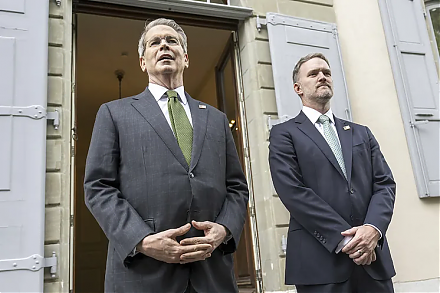
What are the mainstream legal origins of President Trump’s new tariff policies? We delve into the mainstream legal origins of President Trump&rsquo
2019-04-21 10:07:54 Sunday ET
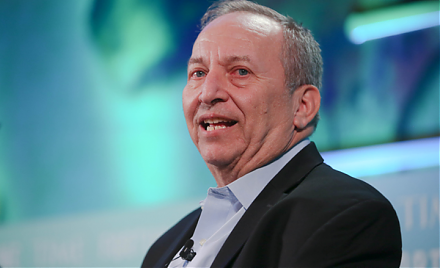
Central bank independence remains important for core inflation containment in the current age of political populism. In accordance with the dual mandate of
2018-09-03 09:31:00 Monday ET
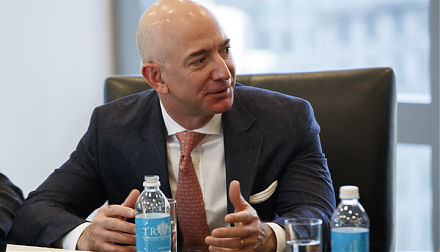
Amazon follows Apple to become the second American public corporation to hit $1 trillion stock market valuation. Amazon's founder and chairman Jeff Bezo
2018-11-05 10:40:00 Monday ET
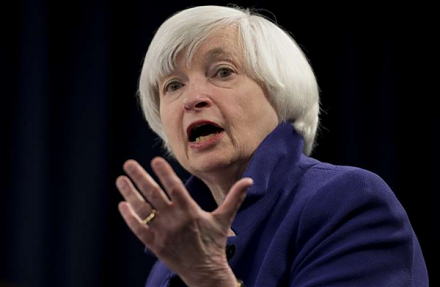
Former Fed Chair Janet Yellen worries about U.S. government debt accumulation, expects new interest rate increases, and warns of the next economic recession
2018-11-21 11:36:00 Wednesday ET
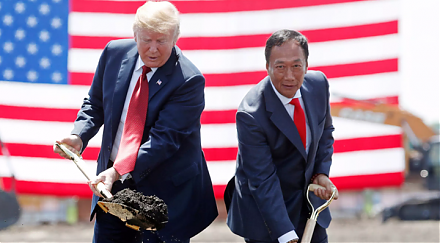
Apple upstream suppliers from Foxconn and Pegatron to Radiance and Lumentum experience sharp share price declines during the Christmas 2017 holiday quarter.
2023-06-07 10:27:00 Wednesday ET

Anat Admati and Martin Hellwig raise broad critical issues about bank capital regulation and asset market stabilization. Anat Admati and Martin Hellwig (